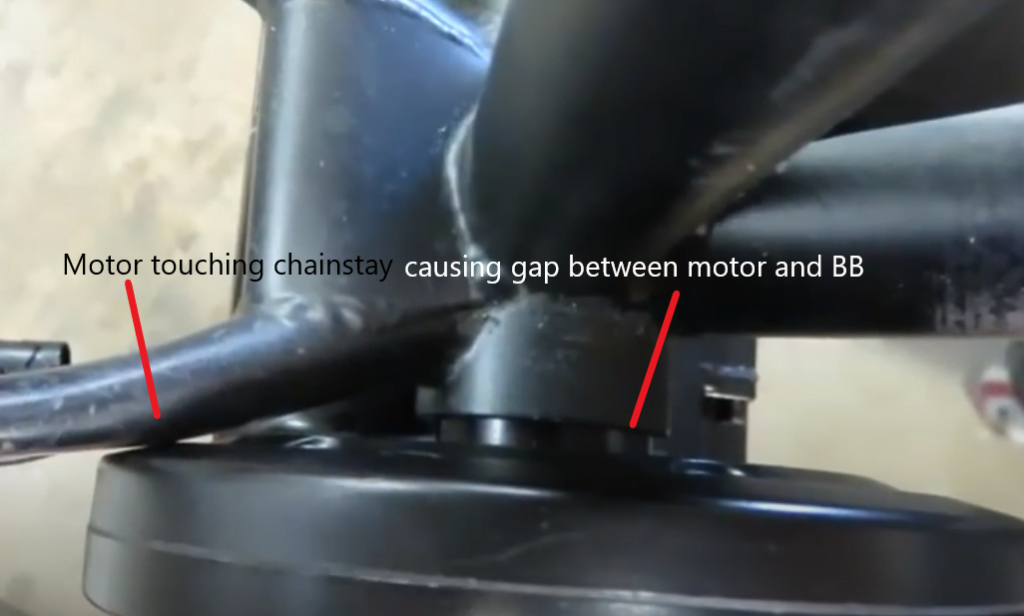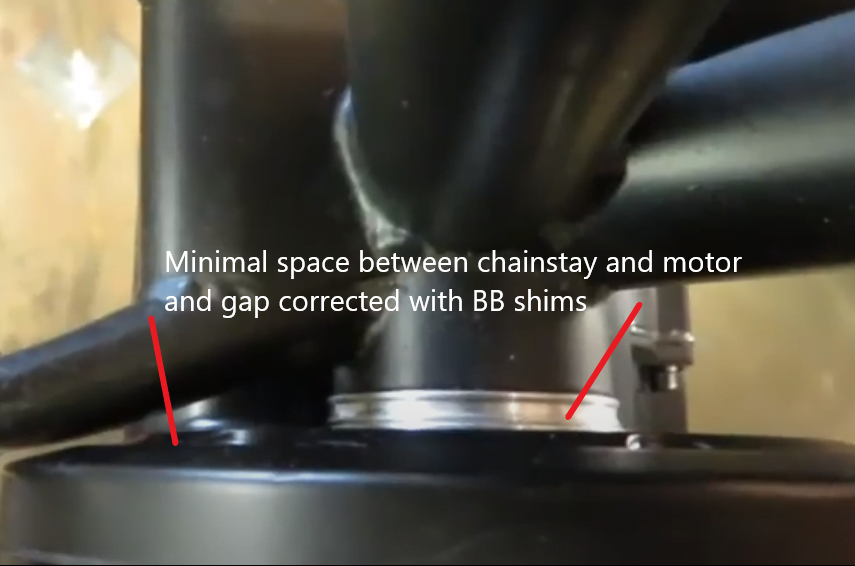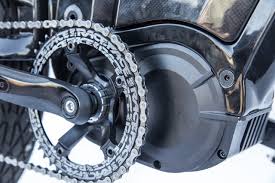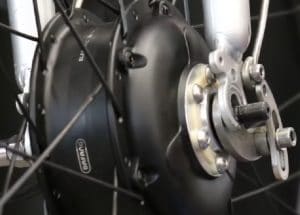Seven Must Do Actions Before Buying ANY eBike Conversion Kit
1. Identify The Specs Of The Donor Bike You Will Be Converting
- If it is steel and the bike was manufactured before 2012 all your options are open and you’re pretty much good to go with front/rear wheel hub kits or mid drive conversion kits with some caveats.
- If your forks and dropouts are made from aluminium or carbon then best advice is to replace those forks with solid steel if you want to go down the hub conversion route especially if you’re thinking of a front wheel hub eBike conversion kit. If the hub motor – front or rear – is 500W and above it is best advice to install torque arms to prevent the wheel from twisting your forks or spinning out of the dropouts – whatever material your forks are comprised of.
- If your bike is carbonfibre a standard mid drive kit can be difficult to impossible to fit as the bottom bracket (diameter) is generally too small to install such a kit – although there are exceptions to the rule. But generally, you are limited to hub conversion kits.
- Do you have front suspension? If you do, most eBike DIYers do not advise using a front wheel ebike conversion kit. In this case you’d be looking at a choice of a rear wheeel hub conversion or a mid drive.
Was your bike manufactured before 2012? If so it’s highly likely that a standard mid drive eBike conversion kit will fit without too much fuss, (bearing in mind previous points) if not then there may be challenges as your bike is likely to be using a different standard for your bottom bracket. See Mid drive Considerations below
2. Be Clear On What You Will Use Your eBike For
To help you decide what type of kit to install, you need to have an idea as to how you will be using your newly converted eBike. For example if it’s simply for flat road commuting, then any eBike conversion kit will do, but a hub motor is the cheapest route. However, if your commute will take you up and down steep hills then you might lean towards a rear wheel hub conversion or a mid drive motor conversion. If you’re heavily into off-roading then a mid drive motor is a popular choice as the motor leverages the bike’s existing gearing and makes climbing hills and rough terrains a breeze while a front wheel hub kit is a definite no-no in that scenario.
3. Determine How Much Power You Will Need
- How much power do you need or perhaps more importantly, want? 250 watts tends to be the smallest size you can buy going up to a whopping 8000 watts if you’re an absolute speednut.
- What country you’re going to be riding your bike could be a determining factor. For example in Europe the maximum wattage you can use on your bike is just 250 watts without legal intervention if riding on a public road. In the USA it varies between 500 and 750 watts. If you’re planning to ride off-road then no such restrictions apply.
- The battery needs to match it the voltage of the motor. So if the motor you choose is 1000W 48V then the battery needs to be 48V (max 52V). The amp hours expressed as Ah needs to be high enough to give you the range you need. You can get a rough idea by multiplying the volts by the Ah to give you your total watt hours eg 48V x 17Ah = 816Wh which is a decent amount of range
- The controller which is the brains of any eBike conversion kit needs to match the voltage of both your battery and motor.
Motor Watts
While motors are measured in watts its important to know that power ratings can be misleading because manufacturers don’t necessarily use the same standards to label their motors. In other words a 250 watt motor from manufacturer A will not necessarily have the same power output as a 250 watt motor from manufacturer B.
The amount of watts used by an electric motor at any given moment equals the voltage supplied by the battery which is multiplied by the current (amps) flowing from the battery to the motor. eg motor connected to 24V 10amp using the formula Watts = Volts X Amps 24v x 10amps = 240 watts.
The peak power calculation is battery voltage X maximum current (amps) the eBike can handle. This maximum current (amps) is determined by the controller and is generally between 30 and 50 amps. eg a 48v battery and a 20 amp peak controller which in theory gives a nominal 960 watts of power.
In reality though because of legal restrictions many manufacuturers will underrate the motor’s power. It’s not uncommon for motors to be rated at 250 watts combined with a 36V battery and a 15 or 20 amp controller. This means at 15 amps the actual peak power is 540W (15 x 36)
Amps = Watts / Volts
Manufacturers get around these restrictions by rating the motor for continuous power instead of peak power. Continuous power means that theoretically the motor could run ad infinitum without ever overheating at the stated watts. However any more power would overheat the motor. In reality a 250 watts continuous motor can actually handle more than 250 watts continuously.
You could connect a 250 watt motor to a 48 volt battery and run 20 amps through the motor to achieve 1000 watts of power. It would eventually burn out the motor but it’s entirely doable.
The differences in motor sizes
The key differences between the different motor sizes are how quick they accelerate and how powerful they are at hill climbing.
250 watt is the smallest motor you’ll find on an eBike. While it is good for riding flat roads it doesn’t have a lot of hill-climbing power.
500 watts is the next level of motor and many experienced riders feel this is the minimum needed for decent hill climbing performance for someone weighing around 150 pounds/68kg.
If you are heavier than this you’ll need more power to get you up a hill. However if the motor is a mid drive this would be better because you get more torque (power) compared to a hub drive. You can drop the eBike to a lower gear and climb hills more easily because the mid drive motor is being used in a more efficient range.
Hub motors tend to have only one gear ratio which means they’ll struggle more on hills.
750 watts upwards are mostly found in the USA. They give you greater acceleration from a standstill position and naturally, better hill climbing.
Beyond 750 watts, these will be mostly hub motors. There is a very limited choice of mid drives beyond 1000 watts. The Bafang Ultra Max mid drive kit is one such motor pushing out 1500W.
4. Be Aware of Hub Motor Considerations
If you’ve decided to go down the hub route you need to know both the size of the wheel you’re looking to replace and whether it will be a front or rear wheel kit. eBike conversion kits have come a long way since their inception offering a wide range of choices for different styled bikes. For example it is now possible to convert folding bikes with 16″ or 20″ wheels using hub conversion kits or other specialist solutions like the Swytch system.
If you choose a rear wheel eBike conversion kit then you need to take gearing into consideration. If your secondhand donor bike has an 8 to 12 gear cassette and more then you’ll want a kit that has a matching cassette. If your bike is older it possibly has less than 8 gears. Many rear wheel kits come with a 7 speed freewheel. If the kit doesn’t match your existing gearing you may have to change your chain, and shifter and maybe even your derailleur.
The current bestselling eBike conversion hub kits
5. Be Accurate When Assessing Mid drive Motor Considerations
Before jumping into buying a mid drive eBike conversion kit there are couple more questions you need to answer about your donor bike – specifically about the bottom bracket.
Bottom Bracket (BB) Standards
You may have noticed the term BSA or JIS when looking at mid drive kits. When you see that in the description it’s telling you that the mid drive will fit a very specific type of bottom bracket. Three of the most popular mid drives kits (which are discussed below) TongSheng TSDZ2, Bafang BBS02 and BBSHD all use the JIS or BSA standard.
There are dozens of other standards such as BB30, BB95, PF30, T47 when it comes to bottom brackets, most of which are incompatible when it comes to the popular mid drive conversion kits. You can see a comprehensive table of BB standards at wheelsmfg. This is why it is imperative to know the details of your own bottom bracket like the shell type, dimensions, date of manufacture so you don’t end up wasting hundreds of dollars on a kit that simply will not fit your bike.
Your BB shell needs to be threaded to be compatible with JIS/BSA. If it uses press in sealed bearing cartridges which have become commonplace since around 2012 you will have problems. However, there are a couple of exceptions.
The two exceptions are the BB30 and the PressFit 30 (PF30) standards.
With both of these bottom brackets you can use a BSA Adapter which will allow the fitting of a 68mm or 73mm mid drive motor.
Bottom Bracket Dimensions
What is the width of your bottom bracket?
The width of the bottom bracket on your bike needs to be between at least 68-73mm to accomodate a mid drive kit easily.
The Bafang BBS02 comes only in one size 68mm but can easily fit in both 68 mm and 73 mm shells using shims/bottom bracket spacers. The BBSHD comes in 6 sizes, the most commonly available being 68mm, 100mm and 120mm and the Tongsheng will fit 68-73mm and 100-120mm bottom brackets.
How to measure your bottom bracket

What is the BB diameter of the inner shell?
It needs to be between 33.6-33.9mm. The width of the PF30 is 46mm while the BB30 is 42mm. Again, this is why you need the BSA Adapter
The Bafang motors have a BB shaft diameter of 33.5mm
Chainstay
If your chainstay flares out too much you may have problems getting the unit to fit properly.

This can generally be resolved by using bottom bracket spacers in sizes of 1-2.5mm.

The 3 Most Popular Mid Drive Bike Conversion Kits


Tongsheng TSDZ2
Bafang BBS02
Offering 9 levels of pedal assist this BBS02 will eat up hills with very little effort from you and can comfortably hit speeds of 28mph
While you can still pedal the bike if the battery dies, it is hard work to do especially going up any gradient.
While the BBS02 is okay for off-roading it isn’t really geared up for heavy-duty steep hill climbing off-road with constant full throttle. You’d be better off looking at the BBSHD.
One of the standout features of this kit is the ability to reprogram or tweak the motor using open source software
Bafang BBSHD
More efficient and more powerful than the BBS02, this is a completely redesigned more stable predecessor of the BBS02.
Physically larger than the BBS02 and with external cooling fins, the BBSHD can handle 30A of continuous power, produce more torque and peak power and gobble hills for breakfast.
If you’re looking to do serious off-roading then the BBSHD is the motor for this.
If you want to live on the throttle and forget about pedaling, again the BBSHD can handle this with ease
Like the BBS02 it is possible to tweak the settings on the kit using flexible open source software.
6. Check What Existing Users Really Think About Their eBike Conversion Kits
The best ways of finding this out is by reading the experiences of as many users as possible on eBike forums, Amazon, TrustPilot and even Facebook groups and YouTube.
7. Research What The After Sales Care Is Like
How good is the customer service or after care? How quickly does the seller respond to any problems you might have, what happens if you need replacement parts?
Summary
So in conclusion, before you spend a penny on any eBike kit you need to know
- the physical makeup of any secondhand bike you’ll use as an eBike conversion right down to the bottom bracket specs if you’re leaning towards mid drive motors,
- what the completed eBike’s main function will be – just cruising around, serious commuting, mountain biking etc
- what amount of power or assistance you will need and
- the specific requirements your donor bike needs to meet for wheel hub conversions and mid drive kits.
- what existing users really think of the eBike conversion kit you’re considering
- what the after sales care is really like
Whichever eBike conversion kit you go for – enjoy and good luck.
Learn about the best eBike helmet to wear with your new conversion
eBike Conversions for Beginners series
- Part 1 is an introduction to eBike conversions and covers reasons to convert a regular bicycle to an eBike, types of conversion kits with their pros and cons, safety and legal considerations, planning where to place components and much more
- Part 2 is a step by step guide on converting your bike with a front wheel hub motor kit
- Part 3 is a step by step guide on converting your bike with a rear wheel hub motor kit
- Part 4 is a step by step guide on converting your bike with a mid drive motor kit
- Part 5 covers the 7 best eBike hub conversion kits for heavy and overweight people
8 Questions You Need To Ask Before Buying an eBike Online
8 questions you need to ask before choosing and buying an eBike online. Learn how to buy an eBike online without being overwhelmed by the experience
BEST eBIKE HELMET FOR S-PEDELEC | REVIEW Abus vs Giro vs Met
Not all eBike helmets are made equal. Wearing the wrong helmet can have serious consequences. A review of five of the best eBike helmets for speed pedelecs
7 Best eBike Conversion Kits for Heavy and Overweight People
Heavy eBike rider? Here’s the 7 best hub and mid drive eBike conversion kits for people weighing 280 pounds plus. eBike Conversions for Beginners Series Part 5
Furo X – Best Folding eBike For Discerning Commuters?
Furo X the world’s first carbon folding eBike. Is it possibly the best folding eBike for discerning commuters?
BTwin Tilt 500 Folding eBike Designed For The Budget Conscious
Why spend 1000s on an eBike? BTwin Tilt 500 – the entry-level folding eBike designed for the budget conscious who seriously appreciate great value for money
Raleigh Stoweway Affordable Fully Equipped Folding eBike
The Raleigh Stow-e-way – this sturdy fully equipped folding eBike with integrated rear rack and automated lights system is just such a fun and comfortable ride.
Last update on 2024-07-26 / Affiliate links / Images from Amazon Product Advertising API












